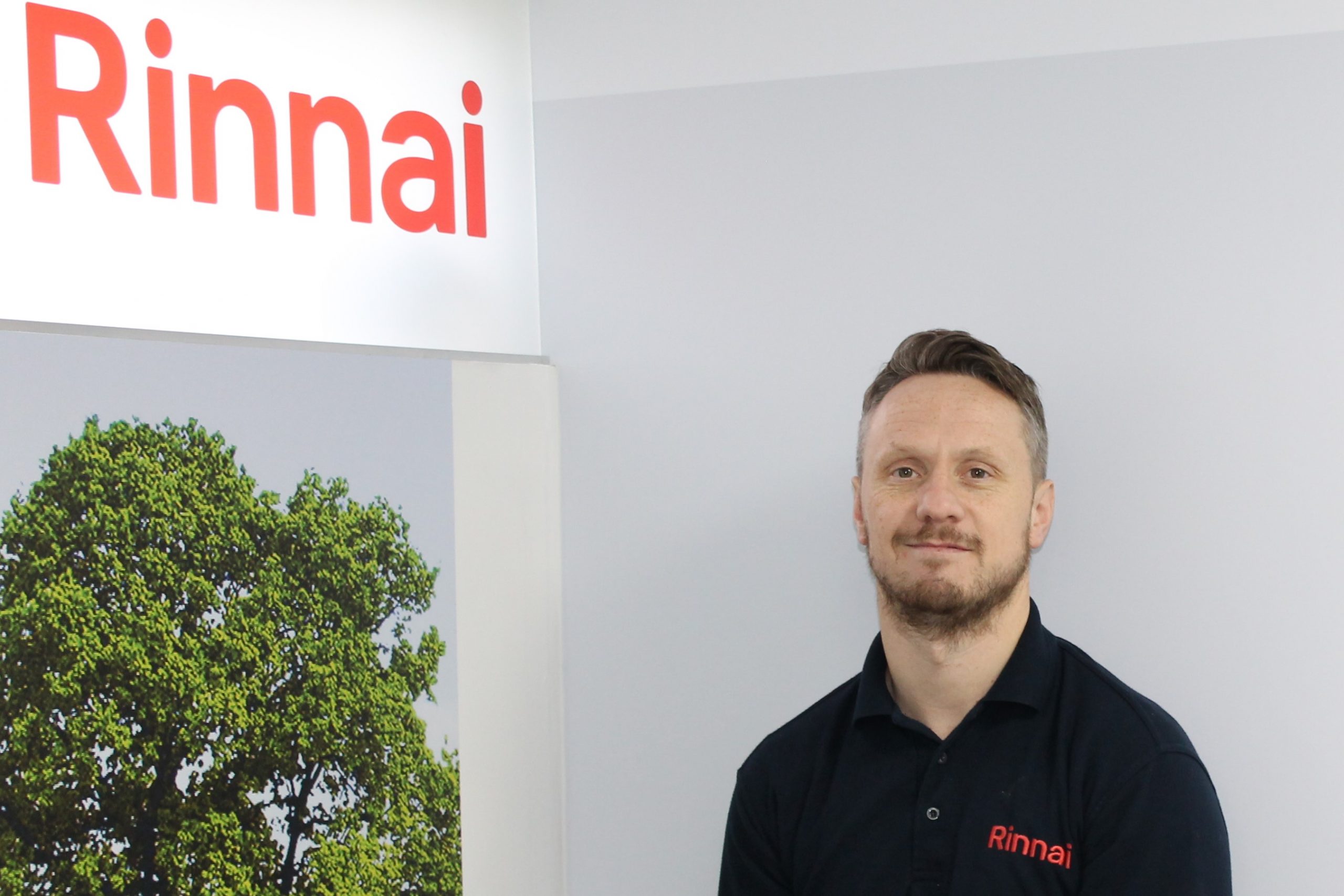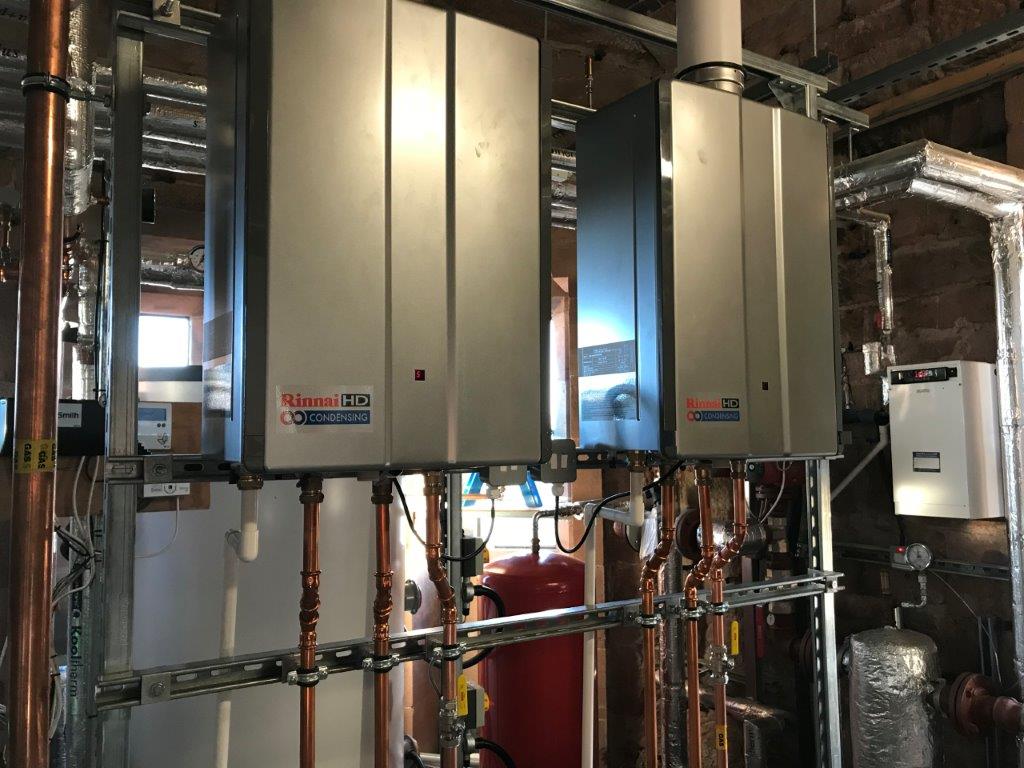
Chris Goggin looks front and back to the task of decarbonising the UK’s energy market with reference to converting the domestic housing stock from carbon-based fuels to the leaner, greener Hydrogen blends of gases for the mass market.
Hydrogen has been identified as a viable replacement of the environmentally harmful carbon-loaded fuels on which we have depended for many generations. Hydrogen has the potential to become the primary source of energy which satisfies the needs of 29 million units of domestic housing stock, of which, 85% is powered by natural gas-fired central heating.
This national reliance on fossil fuels has contributed towards an international crisis. The UK must change its current energy supplies if it is to succeed in its governmental pledge to decarbonise by 2050 and help create an eco-friendlier future.
A previous energy transition involving gas has been successfully completed in recent history. In this article I wish to underscore the insights that can be potentially gathered from previous experience and use them to highlight the realities of a transition to Hydrogen; several academic papers and information sources have been referenced in doing so.
Before currently used methane gasses, the UK employed coal and “town gas,” a derivative of fossil fuels, as its main source of energy for domestic and industrial needs. Town gas was first discovered in the late 18th century by William Murdoc who lit his house and office in Cornwall using a composition of gasses comprised of Hydrogen, Carbon Monoxide, Carbon Dioxide, Nitrogen and Methane.
Fossil fuels – coal for domestic heating – and town gas – produced consistent and heavy carbon emissions which often created acrid “smog” blankets causing transport chaos and serious public health epidemics. Clouds of smog are now recognized as a damaging consequence of carbonization; a process exacerbated by the industrialization of the Western and developing worlds.
One notable incident became known as the Great London Smog of 1952. According to the Met Office, between Friday the 5th and Tuesday the 9th of December 1952, a carpet of dense, toxic smog hovered low over London.
Once the smog dissipated, estimates quoted 4000 deaths, tens of thousands admitted to hospital with respiratory problems and cows at Smithfield’s market were said to have been asphyxiated to death.
From the late 1950s the UK had to rely on importing foreign sourced liquefied natural gas to meet domestic and commercial consumer energy requirements. But in 1965 huge reserves of natural gas, predominately Methane, were found underneath the bed of the North Sea, negating any need to import additional and expensive reserves of fuel.
Having discovered an independent supply of Methane based natural gasses, UK domestic and commercial fuel capacity was doubled, making the government rethink distribution practises in the UK.
British Gas, a Government owned company, was created under the leadership of Sir Dennis Rooke who installed a centralised, nationalised body covering supply and operations of all gas and gas-fired appliances to consumer and industry.
In 1972 legislation was introduced merging all regional gas outlets into one definitive source of distribution through centralized decision and policy making – British Gas. Sir Dennis Rooke’s innovative reconfiguration of internal structure translated into financial success: British Gas sales increased six-fold soon after.
Pre-British Gas, UK gas distribution structure was convoluted: distribution was divided into 12 main area gas boards, often further divided into smaller districts, each a separate body with its own management structure, represented by an internally appointed Gas Council. Domestic fuel distributors numbered over a thousand.
Centralized authority positively contributed towards British Gas overseeing the “town gas” conversion, which saw all existing domestic and commercial sites with gas fired appliances converted to distribute Methane based gasses rather than coal related fossil fuels.
 40 million appliances spread across 14 million customers scattered up and down the entire country were adapted to deploy natural gasses, with what Sir Dennis Rooke observed as being: “perhaps the greatest peace time operation in the nation’s history.”
40 million appliances spread across 14 million customers scattered up and down the entire country were adapted to deploy natural gasses, with what Sir Dennis Rooke observed as being: “perhaps the greatest peace time operation in the nation’s history.”
At its height, the conversion process was so efficient 2.3 million properties a year were converted in the mid-70s. The conversion was reported to have cost £600 million – around £3 billion today.
The 1967-1977 transition process hinged around adapting domestic burners which were found on all old coal and oil-based cookers and other domestic appliances; whilst other countries used premixed aerated burners, the UK employed a non-aerated gas burner for its stable dispersal of flame.
It has since been acknowledged that once these burners were relevantly adapted the development and growth of the natural gas industry was accelerated, further creating job opportunities across the country.
One appliance manufacturer – The Radiation Group – produced conversion sets for over 3 million cookers, 2 million water heaters, 1.7 million fires and 52, 000 central heating units.
In the International Journal of Hydrogen Energy a paper titled, ‘Conversion of the UK gas system to transport hydrogen’ by Paul E. Dodds and Stephanie Demoullin both of University College London, looked in great detail at the question and conducted extensive interviews with experts from academia, industry and government.
The paper stated that appliance conversion costs would be dominated by labour expenses which could be mostly avoided if the government legislated to make appliances hydrogen-ready in advance of the transition.
The paper went on to project two scenarios: In the first scenario, the government legislates for conversion in advance and the principal cost of conversion is to fit new meters and sensors at a cost of £300 per house, adjusted for today’s prices.
In the second scenario, there is little forward planning prior to conversion and cost could be as high as £550 per house, after cost adjustment to today’s labour costs. The total cost of conversion would be around £5.5bn for the first scenario and £12.2bn for the second scenario if all households were converted.
More work on preparing UK domestic homes for the transition will define and refine objectives and details. As 85% of all UK building stock connects directly to the gas grid, utilizing infrastructure capable of transporting Hydrogen means that a complete industrial and domestic conversion is entirely feasible. Additionally, there has been an ongoing iron mains replacement programme to ensure that the wider grid infrastructure is ready to transport Hydrogen using polyethylene pipe.
As necessary infrastructure is already in place and equipped to deliver cargo, the Hydrogen conversion can benefit from previous experience gained during the Town Gas conversion as well as from safety and logistical developments made since 1977.
Since the 60s and 70s discernible social developments are apparent. More households are emptier in the day. Renting from private landlords is common, as is moving home more frequently. A wider sense of social diversity in culture and religion is also easily denoted. All these factors will be apparent in logistical difficulties should the conversion event rolls out.
The volume of energy distributors since has increased. This could be of possible disadvantage to the Hydrogen conversion process. Unlike the Town Gas conversion there will be no centralized voice of decision making, rather a collection of competitors vying for consumer revenue and advertising attention.
This question was highlighted in a presentation by the Low Carbon Institute of Cardiff University titled, ‘Implications of the Low Carbon Transition.’ The presentation stated that a bigger, more complex role for public policy & incentives than in the decades after gas privatisation in 1987 was upon us. However, this will be without the advantages of state ownership & control and it raised issues of who might fund the decline of the natural gas network – and with what incentives? And would there be recompense for any stranded assets? In the transition to natural gas, compensation didn’t arise for stranded town gas production assets when the industry was state-owned. It is apparent that current industry governance adopts extra significance in a system where governance is likely to witness dramatic change.
However, competition in the energy sector can also present consumer benefits. A range of domestic fuel distributors provides a wider scope of home energy options to be explored across a platform of original, modern and eco-friendly appliances.
A varied selection of domestic energy options will be matched by competition in financial rates charged to consumers. A multiplicity of domestic and commercial fuel outlets translates into a multitude of options for domestic energy cost savings.
A national energy conversion demands a level of cooperation and logistical planning which will test the capabilities of all involved, yet the completion of the task will not be unprecedented. We have been here before. Having learnt from past experiences in planning and executing a substitution of gas, it can be done again.
Rinnai manufactures over 2million water heaters every year and as such is at the forefront of creating real advantages for users. Rinnai’s complete range of hot water heating units are available for next day delivery on orders placed before the previous mid-day.
Also available from Rinnai; 24/7 technical support; 24/7 product and spares availability; digital technology aids such as the ‘Help Me Choose’ facility on the www.rinnaiuk.com website.
Contact the company direct by – Calling 01928 531 870 or – email [email protected] or [email protected] or – alternatively use the smart online contact points “Help Me Choose” or “Ask Us a Question”, all held on the website homepage at www.rinnaiuk.com.
For more information on the RINNAI product range visit
www.rinnaiuk.com

